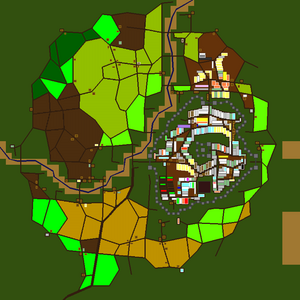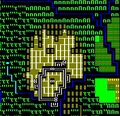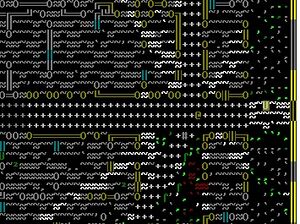- v50 information can now be added to pages in the main namespace. v0.47 information can still be found in the DF2014 namespace. See here for more details on the new versioning policy.
- Use this page to report any issues related to the migration.
Town
v52.04 · v0.47.05 This article is about the current version of DF.Note that some content may still need to be updated. |
Town can refer to either of the following:
Adventure mode
Adventurers spend much quality time in towns. They come to buy, sell, talk to the people, nobles and divine creatures that live there and occasionally to kill those who have invited their wrath. Towns are also where the human Taverns lay. Taverns are the only sources of alcohol in Human lands and make for excellent entertainment with their residing Performers. Due to these two things mercenaries gather at taverns, which makes recruiting companions in taverns very efficient.
Keep
In the middle of the town is a walled stronghold held by many soldiers. Inside of the keep can be found a Lady, other high nobility, Men-at-arms willing to follow you unto death, and well guarded treasure. Under the keep is a dungeon, a dangerous but rewarding place to wander.
Town proper
Outside of the keep is the realm of the bourgeoisie. Commuters and travelers walk along the densely packed houses and shops in narrow streets. Stray domesticated animals roam the muddy alleyways or the pastures near town limits. Vast markets and shopping districts are major trade centers. Other buildings include warehouses that are stockpiled with goods (which can be ransacked without repercussion) and wells where townspeople can gather and socialize. Common structures include taverns and temples. Libraries are very rare.
Below is a list of different shops and markets found in a town. Most towns do not have every single retail available, and adventurers need to travel to a different town in order to browse the wares of a distinctive type. The shops that are "common" are common because only animal products (meat, bone, leather) and farm products (cloth and food) are produced in any significant numbers. Stone, wood, and metal are all extremely rare materials in towns and because of this, few industries based upon these materials will spring up. An exception is the leather goods shop, which is very uncommon compared to other leather shops.
Common shops:
- µ General imports
- % Food imports
- [ Clothing imports
- [ Woven clothing shop
- º Cloth shop
- [ Leather clothing shop
- ß Leather shop
- Å Bone carver's shop
Rare shops:
- ╤ Carpenter's shop
- ╤ Stone furniture shop
- ╤ Metal furniture shop
- ♦ Gem cutter's shop
- [ Armorsmith's shop
- / Bowyer's shop
- / Weaponsmith's shop
- Å Leather goods shop
- Å Metal craft shop
In a Market one can find:
- Imported goods
- Imported food
- Imported clothing
- Meat
- Fruit and vegetable
- Cheese
- Processed goods
Subterranea
Below a town can be several subterranean structures: dungeons, catacombs, and sewers. All three can be present at once and may connect or overlap each other underground. They house criminal organizations, outcasts of society and various subterranean creatures, hiding from the rest of the world.
Dungeons reside below the keep, while catacombs reside below temples. Both buildings are always present, so dungeons and catacombs are guaranteed for every town. Sewers on the other hand can be only found in more developed towns. Knowing whether a sewer is present in a town is identifiable by floor grates in the middle of streets. They are accessible via small and elusive entrances above-ground or by diving below nearby waterways.
Criminal organisations
Most towns have Criminal Organisations, formed by collections of outcasts. They are led by someone called the "Boss". Criminal organisations can take over the dungeon town keep or the catacombs, but they don't tend to attack players or do anything hostile.
Destroyed towns
In time some towns will be brought to ruin. These become desolate wastelands where all of the peasants and merchants still living in the wreckage will attack you, perhaps out of fear, perhaps to stop you from looting the keep, where many fine objects lie unguarded.
"Town" in other Languages
|
Worlds | |||||||||
|---|---|---|---|---|---|---|---|---|---|
| General | |||||||||
| Map |
| ||||||||
| Civilization |
| ||||||||




